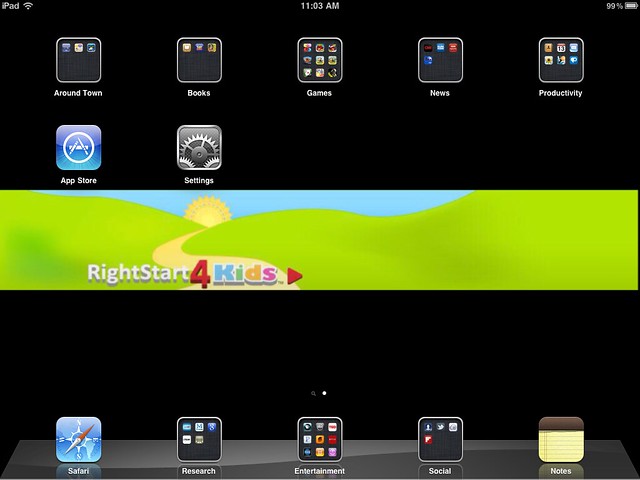
cc licensed image shared by flickr user learningexecutive
“How do you determine where to start?” a member of our school’s leadership asked me, referring to setting priorities to move Solomon Schechter School of Queens forward. “We start,” I answered, “with those areas that have the potential to make the greatest impact for student learning.” What I didn’t include in my answer is the pragmatic yet vital addition, we start in those areas in which opportunity presents itself.
When our school’s beloved computer lab teacher announced his retirement last spring, it was evident to me we had the opportunity and responsibility to envision his position anew. Today, lead educational technology educators in schools most serious about technology to enhance the quality of learning are most typically referred to either as “educational technology coach” or “educational technology integrator”, rather than “computer teacher” or “computer lab director”. The difference is not merely in name. Educational technology coaches and integrators are responsible for leading school efforts to utilize educational technology as a tool to improve the quality of learning broadly. Their specific job descriptions reflect the range of needs of the diverse schools they serve, and evolve over time as their schools reach goals and establish new ones.
Assessing our school’s program, I was impressed by inherent strengths in our approach. We had defined the computer lab experience as being primarily focused on enhancing learning, utilizing high quality educational resources to support language arts and math instruction. The approach, now called “blended learning”, is championed within many general and Jewish educational circles as a promising option to improve quality of learning and meet students’ individualized learning needs while managing costs. It involves “blending” on-line learning resources through which students progress at their own pace with whole class and small group learning experiences in classrooms designed by teachers. We will build on our lab based blended learning model over time, likely adding to the range of learning resources we use and incorporating such experiences into classrooms.
Yet, there is more our students will need to be successful in high school, college, and the careers they will one day enter. There are technology skills necessary to be able to learn, research, collaborate, communicate, and create. We will need a formalized technology curriculum. We will also need to support our teachers to enhance learning in their classrooms with technologically based tools and resources. Finally, we will need a technology plan to guide us, enabling us to prioritize, implement supports for students and teachers, and evaluate progress. In order to accomplish these tasks, an educational technology leader is vital.
Although I had not yet officially started as Head of School, last spring I led our school’s search for an educational technology coach, along with a capable interview committee comprised of our school’s professional leadership team: Sheldon Naparstek, Lower School coordinator and Interim Head of School; Ofier Sigal, Middle School Coordinator; Amittai Ben Ami, Judaic Studies Principal; and David Kalman, Executive Director. After reviewing many resumes and interviewing a number of capable candidates, our interview team was blessed to find an educational technology coach well versed not only in educational technology, but also in general studies, Judaic studies, and special education: Rebecca Penina Simon.

Rebecca Penina Simon
Ms. Simon and I had once met face to face prior to her interview last spring, at the 2012 ISTE (International Society for Technology in Education) conference. I got to know her work and educational vision better as she has emerged as key voice in a growing national cadre of Jewish educators engaged in learning and collaborating on the topic of integrating technology in Jewish schools. She became a featured blogger on YU2.0, an on-line Community of Practice I facilitate through Yeshiva University, supporting Jewish educators to integrate technology into their classrooms. She is also gaining respect as a leader in the field of educational technology coaching more broadly, most recently spearheading and facilitating a weekly learning session on twitter for educational technology coaches. Committed to ongoing learning, Ms. Simon is currently participating in the national Google Apps for Education conference. I am proud that our school’s vision of educational technology to enhance the quality of student learning enticed Ms. Simon to turn down other job offers and relocate to New York from Baltimore for our school.
Ms. Simon and I both welcome your input into our developing educational technology learning experiences and look forward to offering ongoing updates on our progress.








